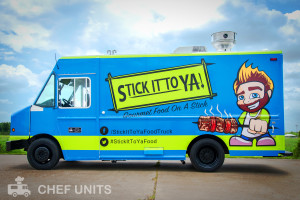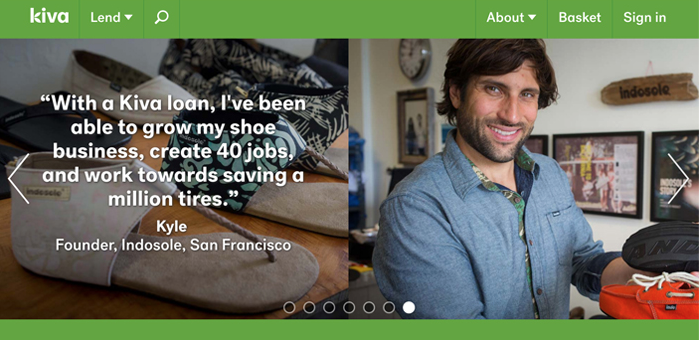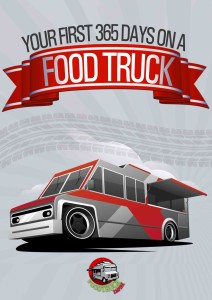Jump To Content:
Introduction | Funding Options | No Money or Connections? | Crowdsourcing to Fund a Truck | The Best Way to Fund a Truck Right Now (My Opinion) | How Successful Food Trucks Raised Capital | Thank You!

When it comes to acquiring capital for a business, successful food truck owners are often forced to get creative when coming up with seed funding. Since starting the Food Truck Empire podcast, I’ve had the opportunity to learn from entrepreneurs that launched their businesses with help from crowdsourcing websites like KickStarter.com, dipping into their personal savings / 401K’s, charging credit cards, or more often than not a combination of all these.
My own experience seems to matchup to a recent poll ran that asked food truck owners to share how they financed their own food trucks, trailers, and carts. From those that responded, these were the most common sources of capital for a mobile food business:
Personal Assets: 401K, Savings Account, or House.
Family and Friends: Either asking for loans or gifts.
Banks and Credit Unions: Going to a bank, filling out paper work, crossing your fingers that you get approved at a decent rate.
Credit Cards: Putting it on the plastic and paying interest up the nose.
Online Crowdsourcing Platforms: KickStarter.com, IndieGoGo.com, or other websites. The majority of these crowd-funding websites do not require you to pay back the funds.
Rent or Lease: This can be a great option especially if you’re not 100% confident in your menu or if you don’t want to go “all in” to invest in a food truck just yet. If you start by renting you obviously won’t need as large of a nest egg.
Getting a Government Grant: While you typically don’t need to pay these back.. This type of funding is usually hard to come by or not available in most areas.
One thing that is clear among the food truck owners I’ve interviewed, it’s that entrepreneurs often need to use a combination of each of the income sources listed above to raise sufficient capital. This is especially true for Marty Richie (full-audio interview provided below), owner of the Motley Crews food truck out of Lakeville, Minnesota. Richie used a combination of personal savings, 401K, a loan from his mother, and credit cards to fund his truck after being turned down for a bank loan. While dipping into personal assets is the most common way to fund a vehicle, I advise trying to leverage some of the new ways entrepreneurs are funding their businesses.
How Should I Fund My Food Truck?
Your personal situation will usually determine how you decide to fund a truck. If you’ve got $150,000 socked away in a savings account you can feel free to stop reading now. You don’t need my help. But assuming you’re not in this camp, it’s time to explore the alternatives that are out there. First, you should ask yourself whether or not you’re truly prepared to buy a food truck right away. You can very easily rent a food truck instead.
Option #1: Secure Financing Through a Loan
More than likely you can get funding through a traditional bank loan. Rates are low right now and assuming you’ve got either good credit or collateral you can put up against the food truck or trailer, you’ll be able to use just about any bank to secure this purchase with your personal credit. A new truck or trailer is in the price range of buying a really nice new car or pickup truck. If you can get a car loan, you can probably get a food truck loan too.
Option #2: Learning from Others, Leveraging Pop-ups, and Old-Fashioned Hustling
If you have no money, your in debt, and no experience operating the food industry take a page out of Allen Tan’s playbook. Instead of giving up on his dreams because of lack of experience or capital, he offered to donate his time free of charge to food truck owners in his hometown of Toronto. This allowed him to start learning ins-and-outs of the business without investing a penny. What did Tan get in return?
For one, Tan learned what it’s like to operate a food truck. He quickly understood what it’s like to wakeup of before 6 a.m. to start cooking food for the day and how to manage the daily duties of a business. Maybe best of all, he learned whether or not he actually wanted to get into this type of business.
In Allen’s case, he decided that he would like to continue his journey and eventually began by doing “pop-ups” locally. Pop-ups allow chefs the opportunity to cook at an event with their own equipment, but without the need for a trailer or tent… sort of like catering an event. Again this was another step in the right direction for Allen. Even though he still didn’t have the funding for a truck, he was still able to get his brand MEnU out there and continue building momentum. The full-interview with Allen is also provided below so that you can learn more from his story.
Option #3: No Interest Loans with Kiva
The idea of getting a zero interest loan may sound too good to be true. But in this case, it’s not. Kiva is a non-profit group based out of San Francisco that helps small business owners in the United States raise the money they need to start small businesses. There is a maximum of $10,000 that you can get distributed through Kiva.
To learn more about the entire process of getting a loan with Kiva, click here. We have a full podcast interview that walks you through the process of getting an account setup with Kiva along with other important details of the program.
Option #4: The Crowdsourcing Revolution
Crowdsourcing websites like KickStarter.com or GoFundMe.com allow anyone the opportunity to pitch their creative food projects to members of their community. If enough members support the project by making donations, the project can receive significant capital to launch their venture. Numerous food truck owners have successfully leveraged this platform to obtain capital, but it isn’t quite as easy as setting up a profile and waiting for money to come in. In fact, the vast majority of campaigns never hit their goal.
Linda Jo Kushner is one KickStarter.com success story that was able to generate over $20,000 in 28 days using the platform. If you want learn more about how she did it check out page 8 of this guide. She also explains how she was able to accomplish it all in this interview.
Before You Join Any Crowdsourcing Website to Fund a Truck Read This!
Okay. Here’s the deal. These crowdsourcing websites like KickStarter.com and GoFundMe.com are a game-changing way to get the money you need to start a business without being handicapped by loan payments. But in order to be successful with these websites you must begin organizing and promoting before you launch. You can spend 10 minutes or less putting up a campaign, but you won’t get many folks to contribute unless you’ve put real thought into the launch.
New Course: Learn More About How Food Trucks and Other Food Businesses are Using CrowdFunding to Raise Capital
Successfully crowdsourced campaigns need momentum and they need lots of people to be involved both to contribute funds and help spread the word about your fundraising efforts to others.
Here are a few tips that will help you get the most bang out of your online fundraising efforts:
1.) Make list of who you plan to contact prior to launching your campaign online and type an email explaining why you want to start a food truck business and why you need their help.
Nothing fancy required, but you should create a list on spreadsheet or a piece of paper with the names and email addresses of your family members, close friends, and anyone else you think would lend a helping hand.
Tip: Add me to that list to: [email protected]. One of the reasons I want this website to exist is so that I can help promote and contribute to food truck campaigns. There’s nothing I would get me excited more than to see Food Truck Empire community members getting funding and launching their businesses. Seriously, contact me before you launch a campaign!
Make sure you contact these folks prior to launching your campaign! This is super important. More than likely a few of your close friends and family members will be anxiously anticipating the start of your campaign and be eager to donate to your cause. The idea is to build up a bit of anticipation for this event so that you get a lot of contributions early and begin to build excitement.
Oh yeah. Don’t forget to tell everyone you’ve emailed to forward on the email to their friends to help spread the message even further. This is one of the tactics that Linda Jo Kushner feels made the different in her campaign when she was able to raise over $20,000 in funding through KickStarter.com.
You should also share your message on social networking websites like Facebook and Twitter.
Serious about Starting a Food Truck? Click Here To Learn How Anthony Salvagno’s Journey Can Help You Start a Food Truck Faster.
2.) Study successful KickStarter.com and GoFundMe.com campaigns from other people.
Study what their campaigns look like and see how they promoted themselves. Watch the videos that have been produced and read the story of why. Here are a couple good examples of campaigns that have been successful at building funds online:
Linda Jo Kushner’s campaign on KickStarter.com
DB’s Hotdog and Sasauge Emporium Campaign on FoodStart.com
$100,000 in funding from with a KickStarter.com campaign – This interview is not with a food truck or restaurant owner. The guys featured here were raising capital for a back pack they wanted to create. Still, they explain there process for getting funded with KickStarter.com and many of the lessons can be applied to raising money for a truck.
3.) Finally, be realistic about how much money you can raise. Getting $100,000 in funding for a brand-new food truck probably won’t be possible for you unless you’ve got a really wealthy and strong network of people to tap into. For the majority of start-ups, crowdfunding a truck is an important component of the funding mix… not the only part.
Learn How These People Funded Their Business
One of the best ways to figure out how to do something is to learn from people that have been there and done it. In each of these podcasts the entrepreneurs share their unique perspective on raising capital to build a mobile food business. I encourage you to listen to these interviews, take notes, and implement the advice of these successful food truck entrepreneurs:
Linda Jo Kushner: Learn how Kushner raised over $20,000 in 28 days using KickStarter.com so she could start Linda’s Luncheonette. Download here. Go to page 8 of this guide for more details on how Kushner accomplished this.
Marty Richie: Listen to Richies story of how he tapped into multiple sources (401K, savings, credit cards, and his family) to fund the Motley Crews Heavy Metal Grill. Download here.
Allen Tan: Listen to this episode to find out how you can get started with no experience in the food industry and lots of student loan debt. Also, learn how using the concept of a pop-up could help you get started even faster. Download here.
Laney Strange: See why Laney Strange decided to go with a food trailer instead of a truck to get Memphis Punch rolling. Hint: It was much, much more affordable to go with a trailer. Download here.
Thank you for reading!
I want to thank you for taking the time to read through this far. If you’re able to get this through this material I don’t think anyone can question your seriousness about starting or expanding an existing food truck business.
The food truck business certainly isn’t for everyone. But for those handful of individuals that want to forge their own path and make money on their own terms in the food industry this journey can be both rewarding and profitable.
Finally, if you know someone that is interested in food truck entrepreneurship, please tell them about FoodTruckEmpire.com in person or by sharing the content on websites like Facebook and Twitter. It’s readers and listeners like you that make it possible for me to continue putting out this content on an ongoing basis. So Thank you!
If you’ve got any questions or thoughts about topics I should cover in the future on this website, please email me at [email protected]. I usually respond to emails in about 48 hours on weekdays and read the emails.



